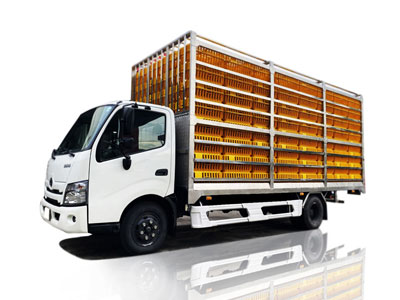The F650 dump truck is a versatile and powerful vehicle commonly used for construction and heavy hauling. Knowing its weight is crucial for various applications, including safety, performance optimization, and compliance with transportation regulations. In this article, we’ll delve into the details surrounding the weight of F650 dump trucks, factors affecting it, and practical tips for owning and operating these impressive machines.
Table of Contents
- 1. What is an F650 Dump Truck?
- 2. The Weight of F650 Dump Trucks
- 3. Factors Affecting F650 Dump Truck Weight
- 4. Legal Weight Limits for Dump Trucks
- 5. Examples of F650 Dump Truck Specs
- 6. Practical Tips for Operating an F650 Dump Truck
- 7. Maintenance Considerations
- 8. Common Questions FAQ
1. What is an F650 Dump Truck?
The F650 is part of Ford’s Super Duty truck lineup and is designed for medium to heavy-duty applications. These trucks are often used in construction, landscaping, and heavy hauling due to their durability and reliability. The F650 is equipped with powerful engines and can accommodate various body styles, including flatbeds, box trucks, and, of course, dump trucks.
2. The Weight of F650 Dump Trucks
The weight of an F650 dump truck typically falls within a certain range depending on its configuration. Here are the approximate weights:
| Configuration | Approximate Weight (lbs) |
|---|---|
| Base Model F650 | 17,000 – 19,000 |
| F650 With Standard Dump Bed | 20,000 – 24,000 |
| F650 With Heavy-Duty Options | 24,000 – 26,000 |
Weights may vary based on added options, such as larger fuel tanks, enhanced suspension systems, and specialized equipment.
3. Factors Affecting F650 Dump Truck Weight
Several key factors can influence the overall weight of an F650 dump truck:
- Body Type: Different dump bed materials (steel vs. aluminum) impact weight.
- Engine Configuration: Heavier engines will increase overall weight.
- Added Accessories: Additional equipment such as cranes or winches add extra pounds.
- Payload: The weight of materials loaded into the dump bed also contributes significantly.
3.1 Body Materials
The choice of body material can significantly impact the weight of your truck. Steel dump beds are generally heavier than aluminum ones, so it’s essential to consider this when calculating the total weight for load capacity.
3.2 Engine Options
F650s come with various engine options, ranging from V8 gasoline engines to powerful diesel engines. Diesel engines usually weigh more, impacting the truck’s total weight.
4. Legal Weight Limits for Dump Trucks
When operating an F650 dump truck, it’s essential to understand the legal weight limits set by various states and federal regulations.
4.1 Federal DOT Regulations
The Federal Department of Transportation (DOT) has established certain weight limits depending on the number of axles:
| Axle Configuration | Max Weight Limit (lbs) |
|---|---|
| Single Axle | 20,000 |
| Tandem Axle | 34,000 |
| Tridem Axle | 42,000 |
Violating these regulations can lead to fines and penalties, making it crucial for owners and operators to ensure compliance.
5. Examples of F650 Dump Truck Specs
An understanding of specific models and their specifications can provide insights into their capabilities. Here are examples of different F650 dump truck models and their key specs:
| Model Year | Engine Type | Horsepower | Weight (lbs) |
|---|---|---|---|
| 2020 | 6.7L PowerStroke V8 Diesel | 325 hp | 20,000 |
| 2022 | 7.3L V8 Gas | 350 hp | 22,000 |
| 2023 | 6.7L PowerStroke V8 Diesel | 330 hp | 21,500 |
6. Practical Tips for Operating an F650 Dump Truck
When it comes to operating an F650 dump truck, there are some practical tips you should consider:
6.1 Proper Loading Techniques
Distributing weight evenly in the dump bed is crucial for maintaining stability and control. Always ensure heavier materials are placed at the bottom and evenly spread out.
6.2 Routine Inspection
Conduct routine inspections of brakes, tires, and suspension before heading out to ensure optimal performance and safety.
6.3 Understanding Load Capacity
Familiarize yourself with the truck’s load rating and never exceed the manufacturer’s specified weight limit to avoid accidents and mechanical failures.
7. Maintenance Considerations
Like any vehicle, regular maintenance is vital for the longevity and performance of your F650 dump truck:
- Regular Oil Changes: Follow manufacturer recommendations for oil change intervals.
- Tire Maintenance: Regularly check tire pressure and tread. Properly inflated tires enhance fuel efficiency and safety.
- Brake Inspections: Conduct periodic brake inspections to ensure proper function, especially in heavy hauling conditions.
8. Common Questions FAQ
8.1 What is the maximum load an F650 dump truck can handle?
The maximum load an F650 dump truck can handle varies based on its configuration but is generally around 10,000 to 16,000 lbs, depending on the model and other specifications.
8.2 How often should I perform maintenance on my dump truck?
Routine maintenance checks should be performed every 5,000 to 7,500 miles, or at least once a year, depending on usage. Regular inspections keep the vehicle in safe operating condition.
8.3 Can I drive an F650 dump truck with a regular driver’s license?
In many cases, operating an F650 dump truck requires a commercial driver’s license (CDL), especially when it exceeds certain weight limits. Check your local regulations for specific requirements.
8.4 What fuel type is used in F650 dump trucks?
F650 dump trucks can be equipped with gasoline or diesel engines, with diesel being the more powerful and fuel-efficient option commonly preferred for heavy-duty applications.
8.5 Are F650 dump trucks suitable for off-road use?
Yes, F650 dump trucks are suitable for off-road use, especially when equipped with proper tires and suspension systems to handle rough terrain.
8.6 What should I do if my dump truck exceeds weight limits?
If your dump truck exceeds weight limits, you should redistribute the load, reduce the amount of material, or take multiple trips to ensure compliance with legal standards.





